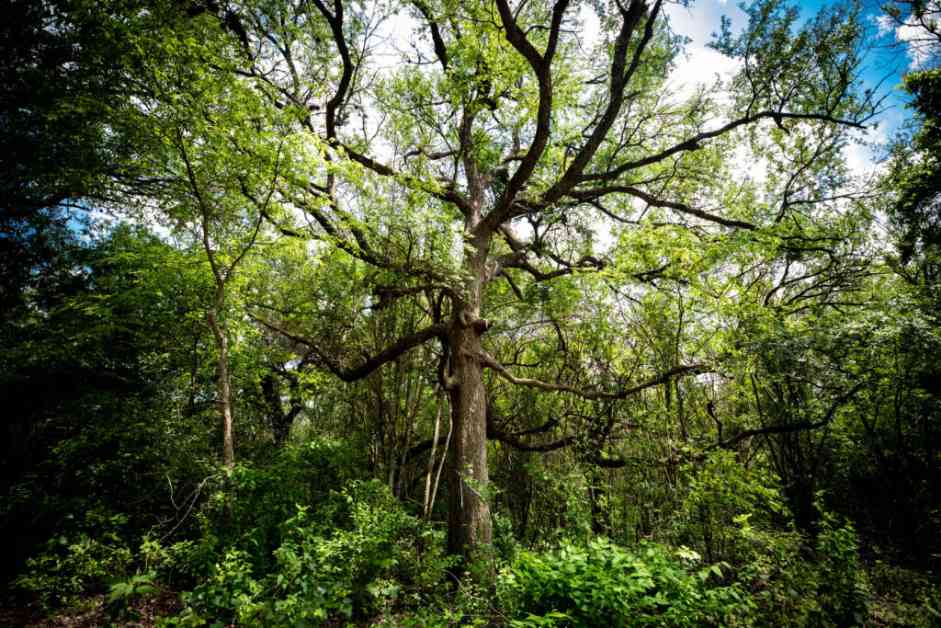As spring approaches, gardeners in Texas are gearing up for the season of new growth and blooming flowers. However, one crucial task that should be postponed during this time is pruning oak trees. February marks the onset of oak wilt season, a destructive disease that poses a significant threat to these majestic trees.
Demian Gomez, a seasoned regional forest health coordinator with the Texas A&M Forest Service, recently sat down with Laura Rice of the Texas Standard to shed light on oak wilt and offer valuable insights on safeguarding trees. Oak wilt, caused by a deadly fungus known as Bretziella fagacearum, is a vascular pathogen that infiltrates the tree’s water-conducting vessels, leading to blockages and ultimately tree death. This disease has wreaked havoc on millions of trees across numerous counties in Texas and beyond, impacting both the environment and property values.
Gomez emphasized the critical nature of oak wilt prevention, highlighting the importance of understanding how the disease spreads. Red oaks are particularly vulnerable, succumbing to the disease rapidly once infected. The fungal mats produced by diseased trees attract sap beetles, which unwittingly transfer the spores to healthy trees through wounds or pruning cuts. This insect-mediated transmission is most prevalent from February to June, underscoring the need to refrain from pruning oak trees during this period.
In terms of susceptibility, red oaks top the list, with live oaks following closely behind. While white oaks exhibit lower vulnerability, they are not entirely immune to oak wilt. Therefore, it is essential for property owners to identify the oak species on their land and take appropriate precautions to mitigate the risk of infection and spread.
When it comes to managing oak wilt, Gomez outlined various strategies, ranging from preventative measures to treatment options. In addition to refraining from pruning during peak transmission months and promptly sealing pruning cuts, diversifying tree species in the landscape can reduce the overall risk of oak wilt outbreaks. For existing cases of oak wilt, interventions such as trenching to sever root connections in rural settings or fungicide injections for urban environments can help protect valuable trees.
As we navigate the complexities of oak wilt season, it is crucial for homeowners and arborists alike to be vigilant and proactive in safeguarding oak trees. By heeding expert advice and implementing preventive measures, we can preserve the natural beauty and ecological significance of these iconic trees for generations to come. Remember, a healthy tree today ensures a flourishing landscape tomorrow.















